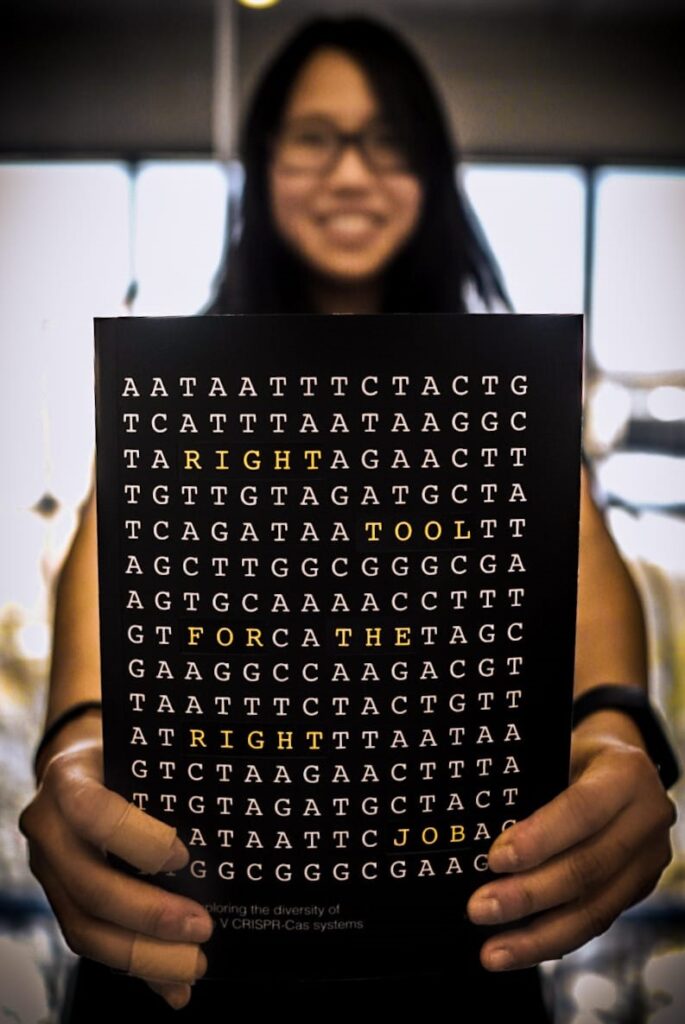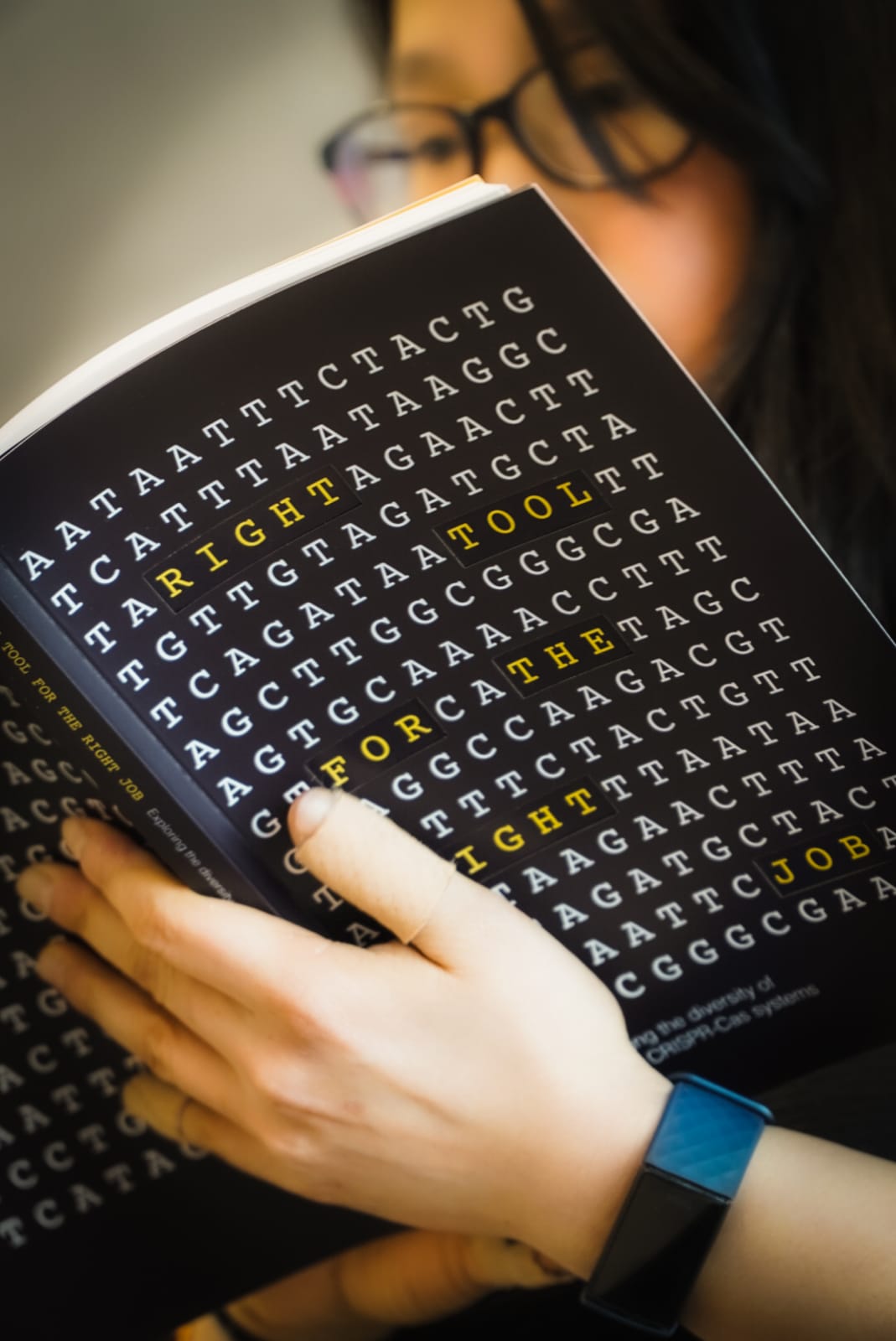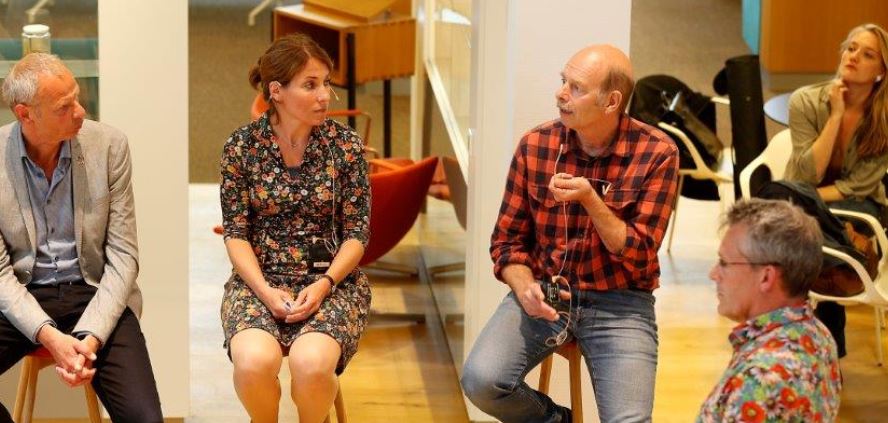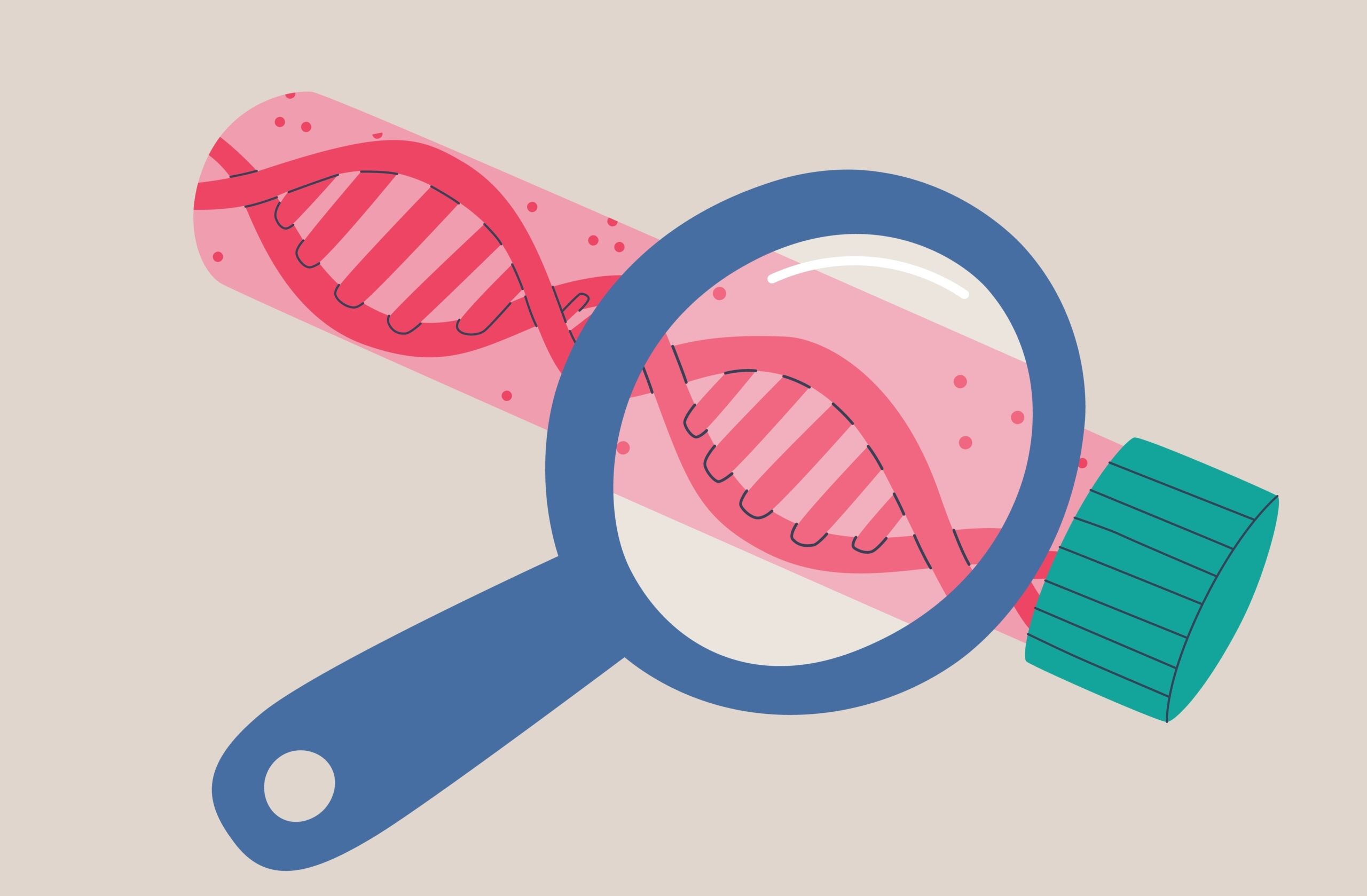Aruban Wen Ying Wu came first in the jury selection and second in the public vote. Combined, these results earned her first place in the competition. A record of 4887 unique visitors cast their vote on the Resource website.
Just after New Year’s Eve, a head-to-head competition ensued between Wen Ying Wu and the Dutch Raisa Rudge. Rudge (cover: Mouthfeel) won the online vote by a narrow margin with 40 per cent of the votes. The jury, however, put her cover in sixth place, making her third overall. Second after Wen Ying Wu was Chinese Shanshan Yang (cover: Dead wood lives).

Genetic alphabet
The jury was made up of Resource-graphic designer Alfred Heikamp, professor Marten Scheffer, Dean of Sciences Wouter Hendriks, Wageningen World chief editor Miranda Bettonville and professor Willem van Groenigen. ‘The cover’s power lies in its simplicity,’ Heitkamp states, referring to the winning design. ‘All of the elements of style have been wonderfully applied: the genetic alphabet, the subtle use of colour and the playful use of words in the title.’
‘A strong image’, Miranda Bettonville adds. ‘Through its simplicity, the subtle use of colour and by integrating the title in the image. A single look makes it clear within what overarching domain the study takes place.’ The winning cover was designed by Nicky Vermeer of graphic design agency Univorm in Arnhem.
Crispr-Cas
Wen Ying Wu studied a CRISPR-Cas system that enables precise modification of DNA. The title of the thesis is pasted into the DNA code, much like would be done through CRISPR-Cas. Literally cut because the holes offer a peek at the title printed on the next page.
The DNA letters (AGTC) are not randomly selected. Geneticists will be able to discern the code of the proteins she studied in the letters, says Wen Ying Wu. Inside the thesis, this concept is repeated. Each chapter is preceded by a title page featuring the DNA sequence discussed in the chapter.
The online election was a head-to-head competition. How did you gather your 1638 votes?
‘I sent an email to the two groups at which I worked: Microbiology and Synthetic Biology. That is already quite a group of people. Moreover, I reached out to friends and family through WhatsApp and Facebook, asking them to vote for me.’
How did the concept for the cover originate?
‘It began with a brainstorm session with designer Nicky Vermeer of Univorm on my work. He developed this concept, which I really liked. Together, we detailed it further. The letters contain a hidden DNA code you can search for, just as the CRISPR-Cas system does. It’s like word feud, but more challenging. The holes cut into the cover over the title are very cool. When you open the book, you can see the title clearly. Almost as if the CRISPR-Cas protein found its target.’
You have put a lot of effort into your cover. Is the cover important to you?
‘Yes, I have wanted a beautiful cover for a long time. It allows you to make a personal statement in your thesis. There are barely any restrictions which means you can get creative. Originally, I wanted to design something myself, but the lockdown prompted me to enlist the services of a designer. If I cannot have a graduation party, I at least want the most gorgeous thesis cover possible.’
How do you envision your future in science?
‘I am currently working as a postdoc at Microbiology, where I did my PhD. I will soon transfer to a postdoc position elsewhere. I will, of course, stay in the field if science. To me, science is like a box filled with numerous exciting and unknown things. I hope that excitement never ends!’




